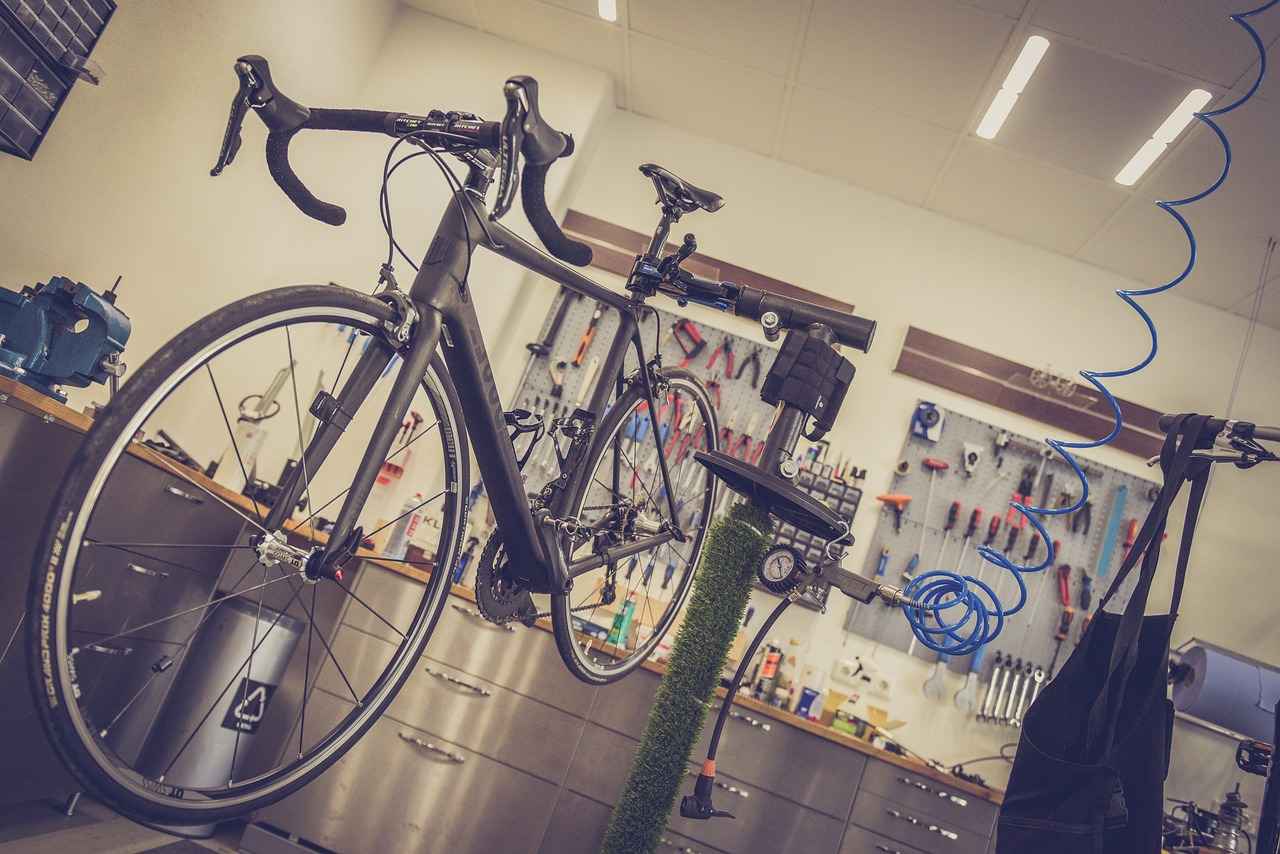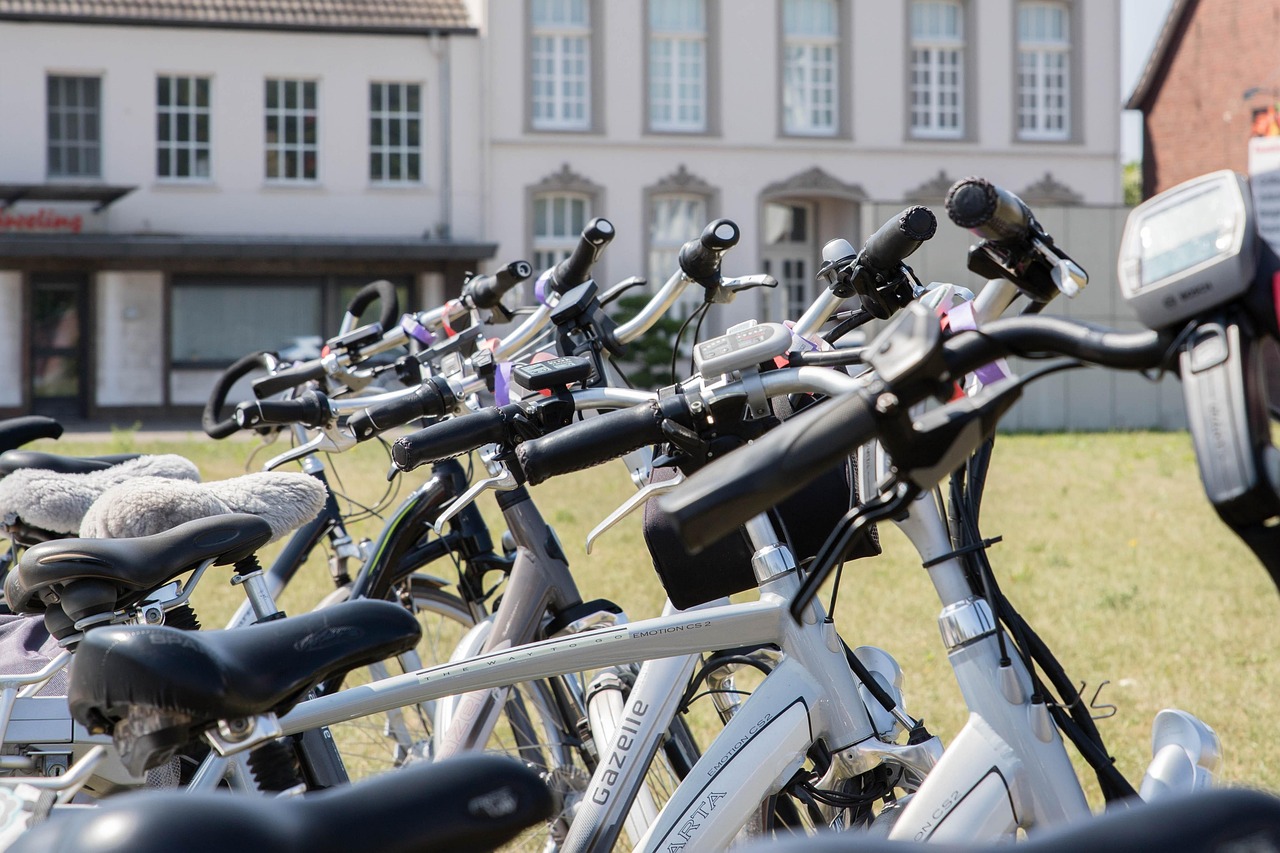This article delves into the essential factors you need to consider when purchasing an affordable electric bike online. By understanding these elements, you can make an informed decision without sacrificing quality or performance.
Understanding Electric Bike Types
Electric bikes are available in various styles, including commuter, mountain, and foldable models. Each type serves different riding purposes, so it’s crucial to identify which one aligns with your needs.
Key Features to Consider
- Battery Capacity: This determines how far you can ride on a single charge.
- Motor Power: Higher wattage means better performance, especially on hills.
- Frame Material: Choose between aluminum for lightweight rides or steel for durability.
Battery Capacity Explained
Battery capacity is measured in amp-hours (Ah). A higher capacity means a longer range, which is vital for daily commutes or long rides.
Importance of Range
Assess your commuting needs carefully. If you plan long rides, a bike with a range of at least 40-50 miles is advisable.
Charging Time Factors
Charging times can vary; some bikes fully charge in 4-6 hours, while others may take longer. Consider your usage patterns when evaluating this feature.
Motor Power and Performance
Motor power significantly impacts speed and climbing ability. For urban commuting, a motor between 250W and 750W is typically sufficient.
Frame Materials and Design
The frame’s material affects weight and comfort. Aluminum frames are lightweight and rust-resistant, while steel frames offer greater strength.
Evaluating Price vs. Quality
When looking for a cheap electric bike, balance the price with quality. A low price may come at the cost of durability or performance.
Warranty and Customer Support
A robust warranty and excellent customer support can enhance your satisfaction. Look for brands that provide comprehensive service options.
Final Thoughts on Buying Cheap Electric Bikes
In summary, understanding these key factors will empower you to choose an electric bike that meets your needs and budget while ensuring a quality riding experience.

Understanding Electric Bike Types
Electric bikes, commonly known as e-bikes, are becoming increasingly popular due to their versatility and convenience. They come in a variety of types, each tailored for different riding styles and purposes. Understanding the distinctions among these types is essential for selecting the perfect e-bike to suit your needs.
- City E-Bikes: Designed for urban commuting, city e-bikes emphasize comfort and practicality. They often feature a step-through frame for easy mounting and dismounting, along with fenders and lights for safety in city environments.
- Mountain E-Bikes: These bikes are built for off-road adventures. They come equipped with robust tires, advanced suspension systems, and powerful motors, allowing riders to tackle challenging terrains with ease.
- Folding E-Bikes: Ideal for those with limited storage space, folding e-bikes can be easily collapsed for transport. They are lightweight and convenient for commuters who may need to take public transport.
- Hybrid E-Bikes: Combining features from both city and mountain bikes, hybrid e-bikes offer versatility for various terrains. They are perfect for riders who enjoy both commuting and light off-road riding.
- Fat Tire E-Bikes: These bikes are designed for stability and traction on soft surfaces like sand and snow. The wide tires provide excellent grip, making them suitable for adventurous riders.
By knowing the different types of electric bikes available, you can make an informed decision that aligns with your riding style and preferences. Whether you prioritize speed, comfort, or versatility, there is an e-bike tailored just for you.

Key Features to Consider
When embarking on the journey to purchase an electric bike, it is essential to evaluate several key features that can significantly influence your riding experience. Understanding these features will help ensure that you invest in a bike that meets your needs and provides excellent value for your money.
- Battery Capacity: The capacity of the battery is a crucial factor that determines how far you can ride on a single charge. A higher capacity typically translates to a longer range, making it ideal for those who plan to use their bike for commuting or long-distance rides. Look for batteries measured in watt-hours (Wh) for a clearer understanding of their potential.
- Motor Power: The power of the motor, usually expressed in watts, directly affects the bike’s performance. A more powerful motor can provide better acceleration and help you conquer hilly terrains with ease. For most riders, a motor between 250W to 750W is sufficient for urban commuting.
- Frame Material: The material of the bike’s frame can impact its weight, durability, and overall ride quality. Common materials include aluminum, which is lightweight and corrosion-resistant, and steel, known for its strength and durability. Consider your riding style and preferences when choosing the frame material.
- Weight: The overall weight of the electric bike is another important aspect to consider. A lighter bike is easier to handle and transport, especially if you need to carry it up stairs or load it onto public transport.
- Brakes: Effective braking systems are vital for safety. Look for bikes equipped with hydraulic disc brakes for superior stopping power, especially in wet conditions.
- Suspension: A good suspension system can enhance comfort and control, particularly on rough terrain. Consider whether you want a hardtail or full-suspension bike based on where you plan to ride.
By carefully considering these key features, you can make a more informed decision when selecting an electric bike that not only fits your budget but also enhances your riding experience.
Battery Capacity Explained
Battery capacity is a crucial factor that significantly influences both the range and performance of an electric bike. Understanding this aspect is essential for anyone looking to invest in an electric bike, as it directly affects how far and how efficiently you can ride.
The range of an electric bike refers to the distance it can travel on a single charge. This is primarily determined by the battery capacity, measured in watt-hours (Wh). A higher capacity means you can cover more distance before needing to recharge. For example, a bike with a 500Wh battery may offer a range of 40-70 miles, depending on factors like terrain, rider weight, and pedal assist level.
When considering your daily commute or recreational rides, it’s vital to assess your specific needs. If you plan to travel long distances regularly, opting for a bike with a larger battery capacity will ensure that you won’t run out of power mid-journey. Conversely, if your rides are short and infrequent, a smaller battery might suffice.
Moreover, performance is also affected by battery capacity. A bike with a larger battery can maintain higher speeds for longer durations, especially on challenging terrains such as hills. The ability to sustain power output is essential for an enjoyable riding experience, particularly for those who enjoy off-road biking or commuting in hilly areas.
Additionally, it’s important to consider the charging time associated with different battery capacities. Larger batteries typically take longer to charge, which can impact your planning. Understanding how long it takes to recharge your bike will help you manage your riding schedule effectively.
In conclusion, evaluating battery capacity is fundamental when selecting an electric bike. It not only determines how far you can ride but also influences the overall performance of the bike. By understanding these factors, you can make a more informed choice that aligns with your riding habits and lifestyle.
Importance of Range
The range of an electric bike is a crucial factor that determines how far you can travel on a single charge. For many riders, especially those using bikes for commuting, understanding this aspect is essential to ensure that the bike meets their daily travel needs. The range can vary significantly based on several factors, including battery capacity, terrain, rider weight, and riding style.
When assessing the battery capacity, it’s important to recognize that a higher capacity typically translates to a longer range. For instance, a bike equipped with a 500Wh battery may allow for a distance of up to 50 miles under optimal conditions, while a 250Wh battery might only provide around 20-30 miles. This variance makes it vital to consider your typical journey length and frequency of rides.
Moreover, the terrain you plan to traverse will also impact the range. Riding on flat, smooth roads will generally yield a longer range compared to steep hills or rough trails. Additionally, factors such as rider weight and the use of pedal assist can influence how much energy is consumed during your ride. Lighter riders may find they can travel further than heavier riders on the same bike.
To ensure you select an electric bike that aligns with your commuting needs, it’s advisable to think about your daily travel distance. If your round trip is, for example, 15 miles, a bike with a range of 30 miles or more would provide a comfortable buffer, allowing for any detours or stops without the worry of running out of battery.
In conclusion, understanding the importance of range is vital when choosing an electric bike. By considering battery capacity, terrain, and personal riding habits, you can select a bike that not only meets your commuting needs but enhances your overall riding experience.
Charging Time Factors
are a crucial aspect to consider when investing in an electric bike. The time it takes to recharge the battery can significantly influence your riding schedule and overall experience. Understanding these factors allows you to plan your rides more effectively, ensuring you never find yourself stranded with a depleted battery.
Charging times can vary widely based on several key factors:
- Battery Capacity: The larger the battery capacity, the longer it typically takes to charge. Most electric bikes feature batteries ranging from 300Wh to 700Wh. A larger capacity battery may take up to 8 hours to fully charge, while smaller batteries can charge in as little as 3-4 hours.
- Charger Type: The type of charger used can also affect charging time. Standard chargers usually take longer, while fast chargers can significantly reduce the charging duration. It’s essential to check the specifications of the charger provided with your bike.
- State of Charge: The current level of charge in the battery will impact how long it takes to reach full capacity. If a battery is only partially drained, it will take less time to recharge compared to a fully depleted battery.
- Temperature: Ambient temperature can influence charging efficiency. Batteries tend to charge more slowly in extreme cold or heat, so it’s important to store and charge your bike in a moderate environment for optimal performance.
To make the most of your electric bike, consider these factors when planning your rides. Knowing the charging time will help you avoid unexpected delays and ensure a smoother riding experience. Always refer to the manufacturer’s guidelines for the most accurate information on your specific model.
In conclusion, understanding the is essential for any electric bike owner. With the right knowledge, you can effectively manage your bike’s battery life and enjoy your rides without interruptions.
Motor Power and Performance
When it comes to electric bikes, motor power is a fundamental aspect that greatly influences overall performance. The motor is essentially the heart of the bike, determining how fast you can go and how well you can tackle steep inclines. For anyone considering purchasing an electric bike, understanding the various motor options available is crucial to making an informed decision.
Electric bike motors are typically classified into two main categories: hub motors and mid-drive motors. Hub motors are located in the wheel hub and provide direct power to the wheel, offering a straightforward and often more affordable option. On the other hand, mid-drive motors are positioned at the bike’s crank, delivering power more efficiently and allowing for better hill-climbing capabilities. This distinction is essential, especially for riders who plan to navigate hilly terrains or require higher torque for off-road adventures.
Another important factor to consider is the wattage of the motor. Motors generally range from 250 watts to 750 watts or more. A higher wattage typically translates to increased speed and improved ability to climb hills. For instance, a 750-watt motor can provide a significant boost, making it easier to ascend steep hills compared to a 250-watt motor. However, it is also essential to consider local regulations, as some areas have restrictions on motor wattage for electric bikes.
In addition to wattage, the torque rating of the motor is crucial for performance. Torque is the measure of rotational force, and higher torque ratings mean better acceleration and climbing power. Riders who frequently ride in hilly areas should prioritize motors with higher torque ratings to enhance their riding experience.
In summary, understanding the different motor options and their specifications can significantly impact your electric bike experience. Whether you prioritize speed, hill-climbing ability, or overall performance, being well-informed about motor power will guide you in selecting the right electric bike for your needs.

Frame Materials and Design
The frame material of an electric bike plays a pivotal role in determining its overall performance, weight, and comfort. Understanding the various materials available will enhance your ability to make an informed decision when purchasing your bike. Below, we explore the most common materials used in electric bike frames and their respective advantages and disadvantages.
| Frame Material | Weight | Durability | Ride Quality |
|---|---|---|---|
| Aluminum | Lightweight | Rust-resistant | Stiff, responsive |
| Steel | Heavier | Very durable | Comfortable, absorbs shocks |
| Carbon Fiber | Very lightweight | High strength | Exceptional ride quality |
Aluminum frames are popular for their lightweight nature and resistance to rust. This makes them ideal for riders who prioritize speed and agility. However, they can sometimes feel stiff, which may affect ride comfort over long distances.
On the other hand, steel frames offer remarkable durability and strength, making them a great choice for rugged terrains. They tend to absorb shocks better than aluminum, providing a smoother ride experience, though they are generally heavier.
For those seeking the best of both worlds, carbon fiber frames are an excellent option. They are incredibly lightweight and offer superior ride quality, making them perfect for serious cyclists. However, they often come with a higher price tag.
In conclusion, the right frame material can significantly impact your biking experience. Consider your riding style, terrain, and budget when choosing the best frame for your electric bike. By familiarizing yourself with the various materials, you can make a choice that meets your needs and enhances your riding experience.
Aluminum vs. Steel Frames
When it comes to selecting the right frame for your electric bike, the choice between aluminum and steel is crucial. Each material offers distinct advantages and disadvantages that can significantly impact your riding experience.
| Frame Material | Advantages | Disadvantages |
|---|---|---|
| Aluminum |
|
|
| Steel |
|
|
Choosing the right frame material depends largely on your riding style and preferences. If you prioritize lightweight and speed, an aluminum frame may be the best choice. Conversely, if you seek strength and durability, especially for rough terrains, a steel frame could be more suitable.
Ultimately, understanding the characteristics of each material can help you make a more informed decision, leading to a more enjoyable riding experience. Always consider your specific needs and the type of riding you plan to do when making your selection.
Ergonomic Design Features
When it comes to electric bikes, ergonomic design is a crucial aspect that can significantly enhance your overall riding experience. A well-designed bike not only promotes comfort but also ensures that you can ride for extended periods without discomfort or fatigue.
One of the primary features to look for in an ergonomic electric bike is the adjustable seat. This feature allows you to customize the height and angle of the seat, ensuring that your legs can extend comfortably while pedaling. A properly adjusted seat can prevent strain on your knees and back, making your ride more enjoyable.
In addition to adjustable seats, handlebars that can be modified in height and angle are essential for achieving a comfortable riding posture. When handlebars are too low or too high, they can lead to discomfort in your wrists, shoulders, and neck. Look for bikes that offer multi-position handlebars to suit your preferred riding style.
Furthermore, consider the frame geometry of the bike. A frame designed with a relaxed geometry can provide a more upright riding position, which is beneficial for city commuting and casual rides. This design not only enhances comfort but also improves visibility in traffic.
Another factor to consider is the shock absorption system. Bikes equipped with effective suspension systems can significantly reduce the impact of bumps and uneven surfaces, providing a smoother ride. This is especially important for riders who plan to tackle rough terrain.
Lastly, ensure that the bike’s weight distribution is balanced. A well-balanced bike allows for easier handling and maneuverability, contributing to a more comfortable ride.
In summary, when selecting an electric bike, prioritize ergonomic features such as adjustable seats, handlebars, frame geometry, shock absorption, and weight distribution. These elements collectively enhance your comfort and enjoyment while riding.

Evaluating Price vs. Quality
When considering the purchase of a cheap electric bike, it is crucial to strike a balance between price and quality. Often, budget constraints can lead to compromises in performance, durability, and overall satisfaction. Understanding the trade-offs involved can help you make a well-informed decision that aligns with your needs.
First and foremost, it’s essential to recognize that while lower prices may seem appealing, they can sometimes indicate lower quality components. For instance, a bike with a subpar battery may save you money upfront but could lead to frequent replacements, ultimately costing you more in the long run. Thus, evaluating the battery capacity and the motor power is vital when assessing the true value of an electric bike.
Moreover, consider the frame material used in the bike’s construction. Aluminum frames, while lightweight and rust-resistant, may not offer the same durability as steel frames. Understanding these differences can guide you in making a choice that balances affordability with longevity.
Additionally, it’s important to look into the warranty and customer support offered by the manufacturer. A robust warranty can provide peace of mind and protect your investment, while responsive customer support can enhance your overall experience. Brands that prioritize customer satisfaction often reflect a commitment to quality.
To further assist in your decision-making process, consider reading reviews and seeking recommendations from other buyers. Real-world insights can reveal the strengths and weaknesses of various models, helping you to avoid potential pitfalls associated with cheaper options.
In conclusion, while the allure of a cheap electric bike is undeniable, it is essential to evaluate the price versus quality carefully. By understanding the trade-offs and doing thorough research, you can find an electric bike that meets your expectations for both performance and budget.
Warranty and Customer Support
are critical factors to consider when purchasing an electric bike. A robust warranty not only protects your investment but also reflects the manufacturer’s confidence in their product. When you opt for a bike with a comprehensive warranty, you gain peace of mind knowing that any potential defects or issues will be addressed without incurring additional costs. Typically, a good warranty should cover the frame, battery, and motor for a minimum of two years, although some brands offer extended warranties for added security.
Moreover, reliable customer support can significantly enhance your overall experience with the electric bike. Whether you encounter minor issues or need assistance with maintenance, having access to knowledgeable and responsive customer service is invaluable. Look for brands that provide multiple channels of support, such as phone, email, and live chat. It’s also beneficial to check if the manufacturer has a dedicated service center or offers repair services, as this can save you time and hassle in the long run.
In addition, consider reading customer reviews to gauge the experiences of others with the brand’s support services. Positive feedback regarding timely responses and effective solutions can be a strong indicator of a company’s commitment to its customers.
Ultimately, investing in an electric bike from a brand that prioritizes will not only enhance your satisfaction but also ensure that you can enjoy your biking experience without the worry of unforeseen issues. Always remember, a well-supported product can make all the difference in your riding journey.
Reviews and Recommendations
play a crucial role in the decision-making process when purchasing a cheap electric bike online. With the vast array of options available, it can be overwhelming to choose the right model that suits your needs. This is where the insights from fellow consumers can be invaluable.
When considering an electric bike, it is essential to explore various sources of reviews, including:
- Online Retailer Websites: Many e-commerce platforms feature customer reviews that provide firsthand experiences regarding performance, durability, and overall satisfaction.
- Specialized Forums: Engaging in discussions on biking forums can yield recommendations from seasoned riders who share their insights on different models.
- Social Media Groups: Platforms like Facebook and Reddit often have dedicated groups where users discuss their electric bike experiences, offering candid feedback.
Moreover, seeking recommendations from friends or family members who own electric bikes can provide personalized insights that online reviews might not cover. Their experiences can guide you toward reliable brands and models.
While reading reviews, pay attention to the common themes that emerge. For instance, if multiple users praise a particular bike for its battery life or comfort, it is likely a strong contender. Conversely, if you notice recurring complaints about a specific issue, it may be wise to consider other options.
In addition, look for reviews that include detailed information about the bike’s performance in various conditions, such as city commuting versus off-road riding. This will help you gauge how well the bike will meet your specific needs.
In conclusion, reading reviews and seeking recommendations are essential steps in your journey to find the perfect electric bike. They not only provide valuable insights into performance and reliability but also empower you to make a well-informed decision that aligns with your riding style and budget.

Where to Buy Electric Bikes Online
Choosing the right platform to purchase your electric bike can significantly influence your overall experience. With the growing popularity of electric bikes, it’s essential to explore various options to find the best deals and services tailored to your needs.
- Reputable Online Retailers: Start by researching well-known online retailers that specialize in electric bikes. Websites like Example Bikes and Another Example are trusted sources with a wide selection and positive customer feedback.
- Manufacturer Websites: Purchasing directly from the manufacturer’s website often provides exclusive deals and the latest models. Brands like Brand A and Brand B frequently offer promotions that might not be available through third-party sellers.
- Local Bike Shops with Online Presence: Many local bike shops have adapted to the online marketplace. Supporting local businesses can provide you with personalized service and the opportunity to test ride bikes before purchasing.
- Online Marketplaces: Platforms like eBay or Amazon can offer competitive prices, especially for used or refurbished electric bikes. However, ensure to check the seller ratings and return policies to avoid any pitfalls.
When selecting a platform, consider not only the price but also the customer service and warranty options available. A reliable customer support system can make a significant difference if you encounter issues with your bike.
Additionally, reading customer reviews and seeking recommendations from fellow cyclists can provide valuable insights into the performance and reliability of the electric bike you are considering. Engaging with online forums or social media groups dedicated to electric bikes can also help you gather experiences from other users.
In conclusion, taking the time to explore various online platforms for purchasing your electric bike can lead to better deals, improved customer service, and ultimately a more satisfying buying experience. Whether you choose to buy from a reputable retailer, a manufacturer, or a local shop, ensure you make an informed decision that best meets your cycling needs.
Reputable Online Retailers
play a crucial role in ensuring that your experience of purchasing an electric bike online is both safe and satisfying. With the rise of e-commerce, it’s more important than ever to identify trustworthy sources to avoid scams and subpar products.
When searching for a reliable online retailer, consider the following key factors:
- Established Brands: Look for retailers that have been in the market for several years. These brands often have a reputation to uphold and are more likely to provide quality products.
- Customer Reviews: Positive feedback from previous customers is a strong indicator of a retailer’s reliability. Websites that aggregate reviews can be very helpful.
- Return Policies: A transparent return policy indicates that the retailer stands behind their products. Ensure that you can return or exchange the bike if it doesn’t meet your expectations.
- Customer Support: Effective customer service is essential. Check if the retailer offers multiple ways to contact them, such as phone, email, or live chat.
- Secure Payment Options: Always ensure that the online retailer employs secure payment methods. Look for HTTPS in the URL and trusted payment gateways.
Additionally, consider checking for certifications or endorsements from relevant organizations that validate the retailer’s credibility. This can add an extra layer of assurance.
In conclusion, taking the time to research and select will not only enhance your shopping experience but also ensure that you receive a quality electric bike that meets your needs. By focusing on established brands with positive customer feedback, you can confidently make your purchase.
Local vs. Online Purchases
When considering the purchase of an electric bike, you may find yourself weighing the advantages and disadvantages of buying locally versus online. Each option presents distinct benefits that cater to different preferences and requirements.
| Buying Locally | Buying Online |
|---|---|
|
|
When buying locally, the immediacy of acquiring your bike can be appealing, especially if you want to start riding right away. Additionally, having the chance to test ride the bike allows you to assess its comfort and performance firsthand, which is invaluable for making the right choice.
On the other hand, purchasing online offers the advantage of a broader selection and often better pricing. You can easily research various models, read customer reviews, and find the best deals from the comfort of your home. However, it lacks the personal touch and immediate support that comes with local purchases.
Ultimately, the decision between local and online purchases depends on your specific needs and circumstances. Whether you prioritize hands-on experience or the convenience of online shopping, understanding the pros and cons of each option will help you make an informed decision.

Final Thoughts on Buying Cheap Electric Bikes
When it comes to purchasing a cheap electric bike online, it is essential to grasp the various factors that will influence your decision. By taking the time to understand these key elements, you will be better equipped to select a bike that not only fits your budget but also meets your specific riding needs.
First and foremost, familiarize yourself with the different types of electric bikes available. Whether you are looking for a commuter bike, a mountain bike, or a folding bike, each type has unique features tailored for specific riding styles. This knowledge will help you narrow down your options effectively.
Next, consider the key features that are crucial when evaluating electric bikes. Pay close attention to the battery capacity, as it significantly impacts the bike’s range and performance. A higher capacity battery allows for longer rides without frequent recharging. Additionally, the motor power plays a vital role in determining the bike’s speed and ability to tackle hills, which is particularly important for those who live in hilly areas.
Another critical aspect is the frame material. The choice between aluminum and steel frames can affect the bike’s weight, durability, and overall ride quality. Aluminum frames are generally lighter and resistant to rust, while steel frames offer enhanced strength and durability.
As you weigh the price versus quality, remember that a lower price does not always equate to inferior quality. Look for bikes that come with a solid warranty and good customer support, as these factors can significantly enhance your ownership experience. Reading reviews and seeking recommendations from fellow cyclists can also provide valuable insights into the bike’s performance and reliability.
In summary, by understanding the essential factors involved in purchasing a cheap electric bike online, you can make a more informed choice that aligns with your needs and budget. Taking the time to research and evaluate your options will ultimately lead to a satisfying purchase that enhances your riding experience.
Frequently Asked Questions
- What should I consider when buying a cheap electric bike?
When purchasing a cheap electric bike, it’s essential to consider factors like battery capacity, motor power, frame material, and ergonomic design. These elements will help ensure you get a bike that meets your needs without sacrificing quality.
- How important is battery capacity?
Battery capacity is crucial as it directly affects your bike’s range and performance. A higher capacity means you can ride longer distances on a single charge, making it vital to assess based on your commuting requirements.
- What is the difference between aluminum and steel frames?
Aluminum frames are lightweight and rust-resistant, making them ideal for those seeking agility. In contrast, steel frames offer strength and durability, suitable for rugged terrains. Your choice should depend on your riding style and preferences.
- How can I evaluate price versus quality?
To balance price and quality, look for bikes that offer good warranties and customer support. Reading reviews and seeking recommendations can also provide insights into the bike’s performance and reliability, helping you make an informed decision.
- Where is the best place to buy electric bikes online?
Researching reputable online retailers is key to a good purchase. Look for established brands with positive customer feedback. Comparing local and online options can also help you find the best deals and services.












